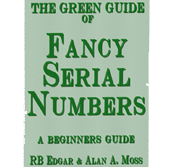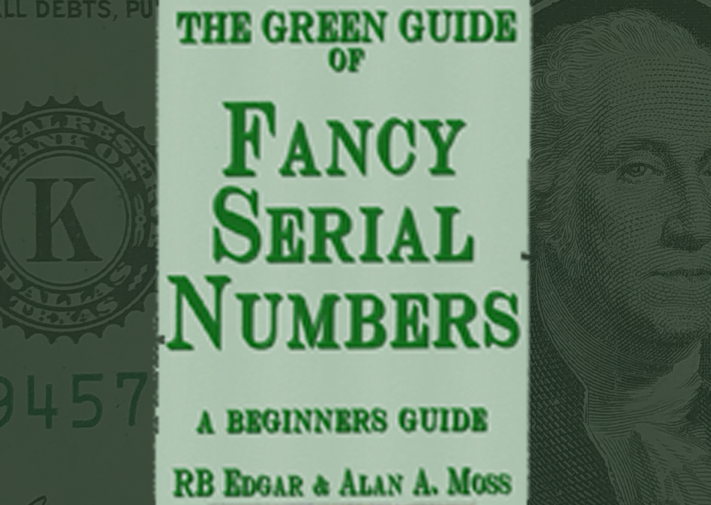Definitions
FSN is short for Fancy Serial Number.
Obverse means the front of the Note.
Reverse means the back of the Note.
Over Face Value (OFV).
It is rather curious that a Fancy Serial Number carries almost the same value no
matter the denomination. To put this in simple terms, a $100 bill with a CSFull
Radar M 01666610 M might be worth $120 ($100 face value + $20 for the
FSN). A $1 bill with the same CS-Full Radar might be worth $21 ($1 face value
+ $20 for the FSN). The premium is the average value of the FSN over the face
value of the Note.
Note: Over Face Value is a general value as of the writing of this website. As the
market’s supply and demand change constantly, the premiums will go up and
down in value accordingly. So, OFV should not be taken as the actual value
of the FSN but rather as a starting point for your own research into the FSN’s
value.
Sequences.
When an “x” is used in the description of an FSN such as M xxx22xxx M,
it is to indicate that the number in this space is not necessary for the description
of the FSN. We have used the “x” character instead of a random number in order
to avoid confusion.
Note:Note: The letter M is used at both ends of the FSN’s M xxxxxxxx M to denote
where the letters in a serial number occur. It is for illustrative purposes only. The
actual letter could be any of the letters the B.E.P. uses such as A, B, L, M, etc.
#1 M xx55555x M This highlights the sequence being discussed, the “x”
represents random number(s) that are not important to the discussion.
#2 M 02555559 M This shows how the sequence might normally look.
Positions.
In this website we will also be using “Positions.” A position is where the FSN starts
within the serial number.
FSN #1 ~ #8 indicates the FSN’s starting position from left to right, and so on,
we will use a CS-Pair to illustrate this:
CS-Pair #1 M 11xxxxxx M is a CS-Pair starting at position 1 from left to right.
CS-Pair #2 M x11xxxxx M is a CS-Pair starting at position 2 from left to right.
CS-Pair #3 M xx11xxxx M is a CS-Pair starting at position 3 from left to right.
CS-Pair #4 M xxx11xxx M is a CS-Pair starting at position 4 from left to right.
CS-Pair #5 M xxxx11xx M is a CS-Pair starting at position 5 from left to right.
CS-Pair #6 M xxxxx11x M is a CS-Pair starting at position 6 from left to right.
CS-Pair #7 M xxxxxx11 M is a CS-Pair starting at position 7 from left to right.
Of A Kind and Grouped numbers.Of A Kind and Grouped numbers.
Currency-Systems does make a distinction between OAKs and grouped
numbers. For example, the difference between CS-4OAKs and CS-Quads is that
a CS-4OAK is 4 of the same number anywhere in the FSN, where a CS-Quad is
4 numbers grouped together with no separation:CS-4OAK = M 7xx77x7x M is any four of the same number anywhere
in the FSN. They must not be grouped together and there must be at least one
separation between the numbers. For example, M 7xx777xx M, or M 7x7xx7x7
M, or M 77x77xxx M are all types of CS-4OAKs.
CS-Quad = M xx7777xx M is any four identical numbers that are grouped
together with no separation in between. For example, M 7777xxxx M or M
xx7777xx M are CS-Quads.
Note: This page contains excerpts and basic information from the book "The Green Guide to Fancy Serial Numbers". Please consider adding a copy to your library, thank you.





